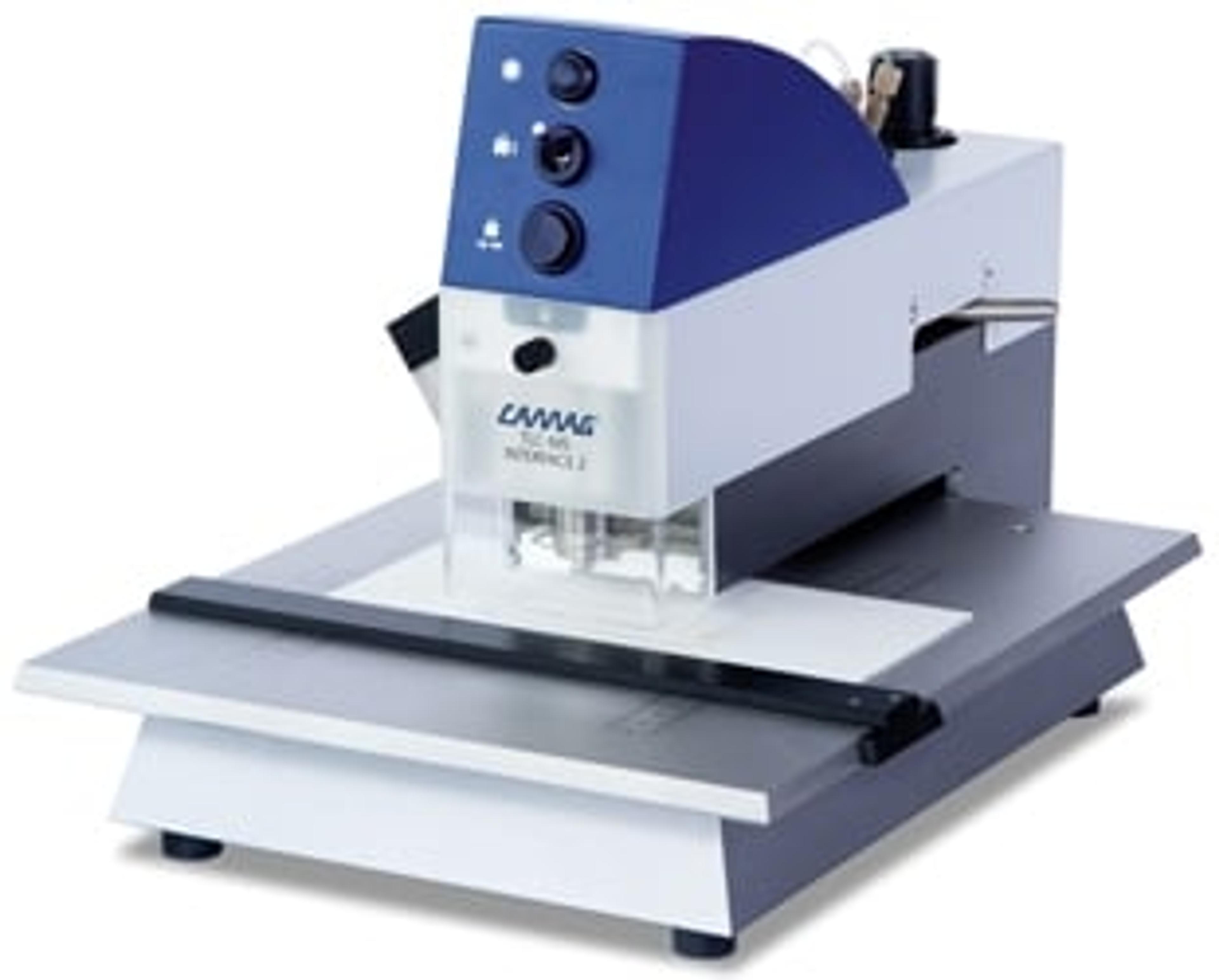Direct extraction of compounds from TLC/HPTLC layers into MS:
1 Jun 2009When doing TLC or HPTLC analyses we often want to know more about a certain substance. We then usually would scrape off the silica, extract the unknown substance zones with an appropriate solvent, filter the solutions and finally inject them into a mass spectrometer.
A tedious procedure, isn’t it?
Now the new CAMAG TLC-MS Interface is available for the rapid and convenient extraction of compounds into APCI-MS, APPI-MS or ESI-MS. The instrument semi-automatically extracts zones of interest and directs them online into a HPLC-MS system for substance identification or structure elucidation.
Easily linked, simple handling
The universal CAMAG TLC-MS Interface is conveniently connected (by two fittings) to any brand of LC-coupled mass spectrometer without adjustments or MS modifications:
• Connect solvent capillary to the HPLC pump
• Connect the outlet capillary to the MS
• Place the zone of interest under the piston
• Start the extraction with TLC-MS Interface
and the MS registration.
How it works
TLC-MS Interface extracts circular zones of 4 mm diameter from the TLC/HPTLC layer, e.g. with methanol or another appropriate solvent by using the standard flow speed of the HPLC-MS system. The semi-automatic instrument features automatic piston movement for pressure seal of the TLC/HPLTC zone on glass plates and aluminium foils, automatic cleaning of the piston, but manual positioning and switching for flexibility.
Conclusion
The methodology of coupling HPTLC and MS can be very helpful because the identification
of unknown compounds can be performed in very short time. Within a minute the mass spectrum of the substance of interest is obtained by direct extraction into HPLC-MS.

